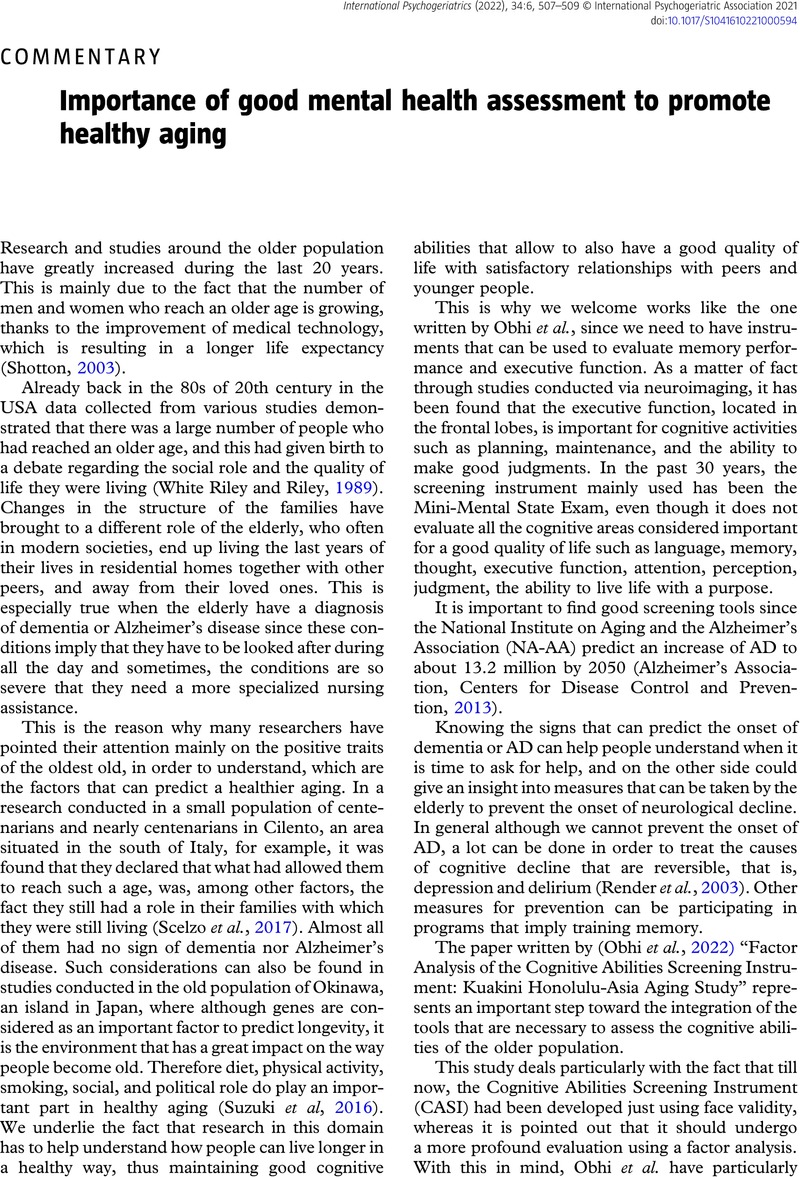Crossref Citations
This article has been cited by the following publications. This list is generated based on data provided by Crossref.
Liu, Yanbing
and
Sun, Gengxin
2022.
Using Convolutional Neural Networks for the Assessment Research of Mental Health.
Computational Intelligence and Neuroscience,
Vol. 2022,
Issue. ,
p.
1.
RAMOS-ESPINOZA, Francisco
MUÑOZ-VASQUEZ, Cristopher
HERNÁNDEZ-MARTÍNEZ, Jordán
LUCERO, Boris
HERRERA-VALENZUELA, Tomás
MAGNANI BRANCO, Braulio H.
VÁSQUEZ-CARRASCO, Edgar
CANCINO, Margarita
and
VALDÉS-BADILLA, Pablo
2024.
Effects of combat sports on cognitive function in older people: a systematic review.
The Journal of Sports Medicine and Physical Fitness,
Vol. 64,
Issue. 3,
Murphy, Kayla
and
Husain, Mustafa
2024.
Psychotropics and cognitive function: A risk-benefit analysis commentary on “Impact of psychotropic medications on cognition among older adults: A systematic review” by Chandramouleeshwaran et al..
International Psychogeriatrics,
p.
100029.



